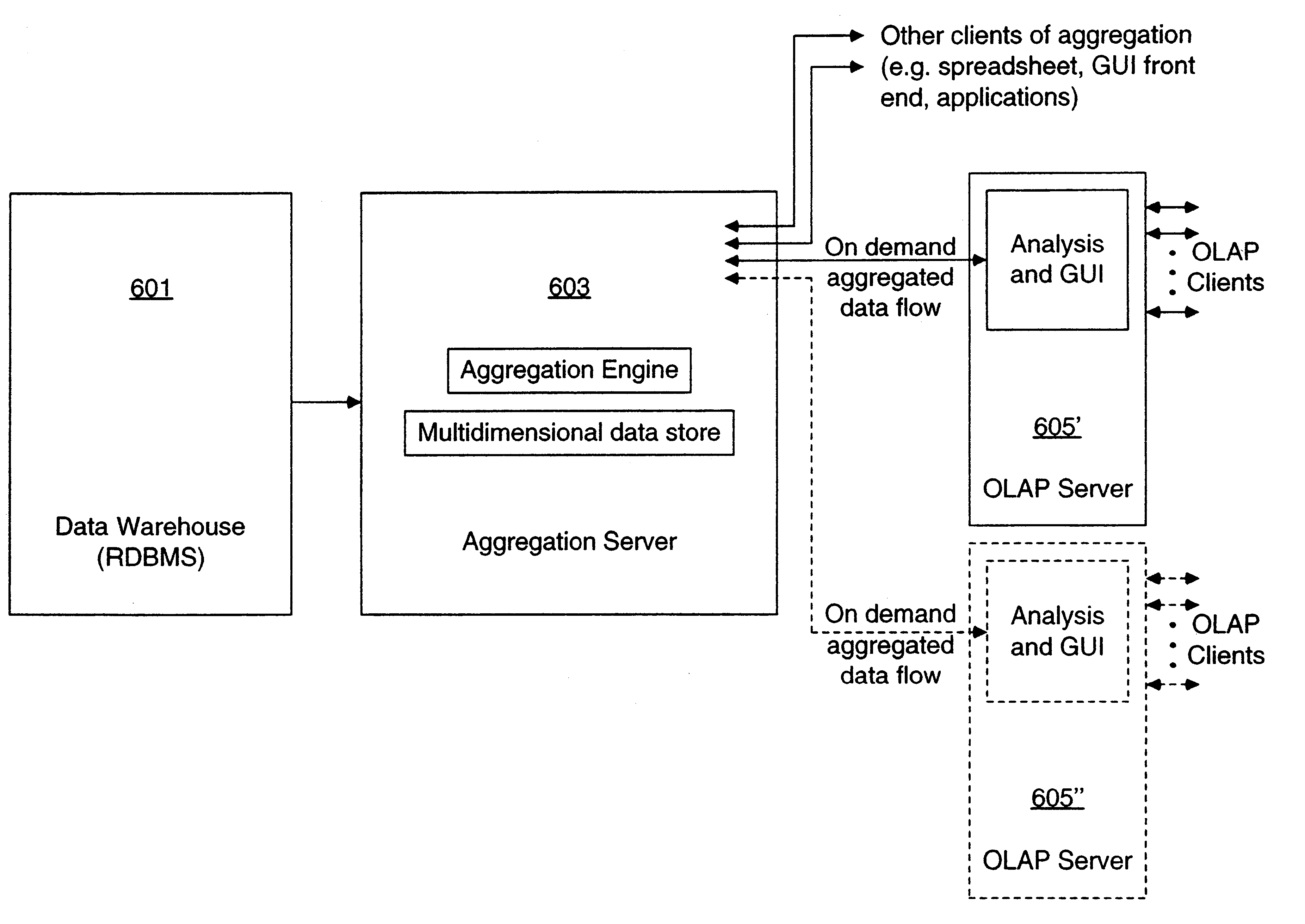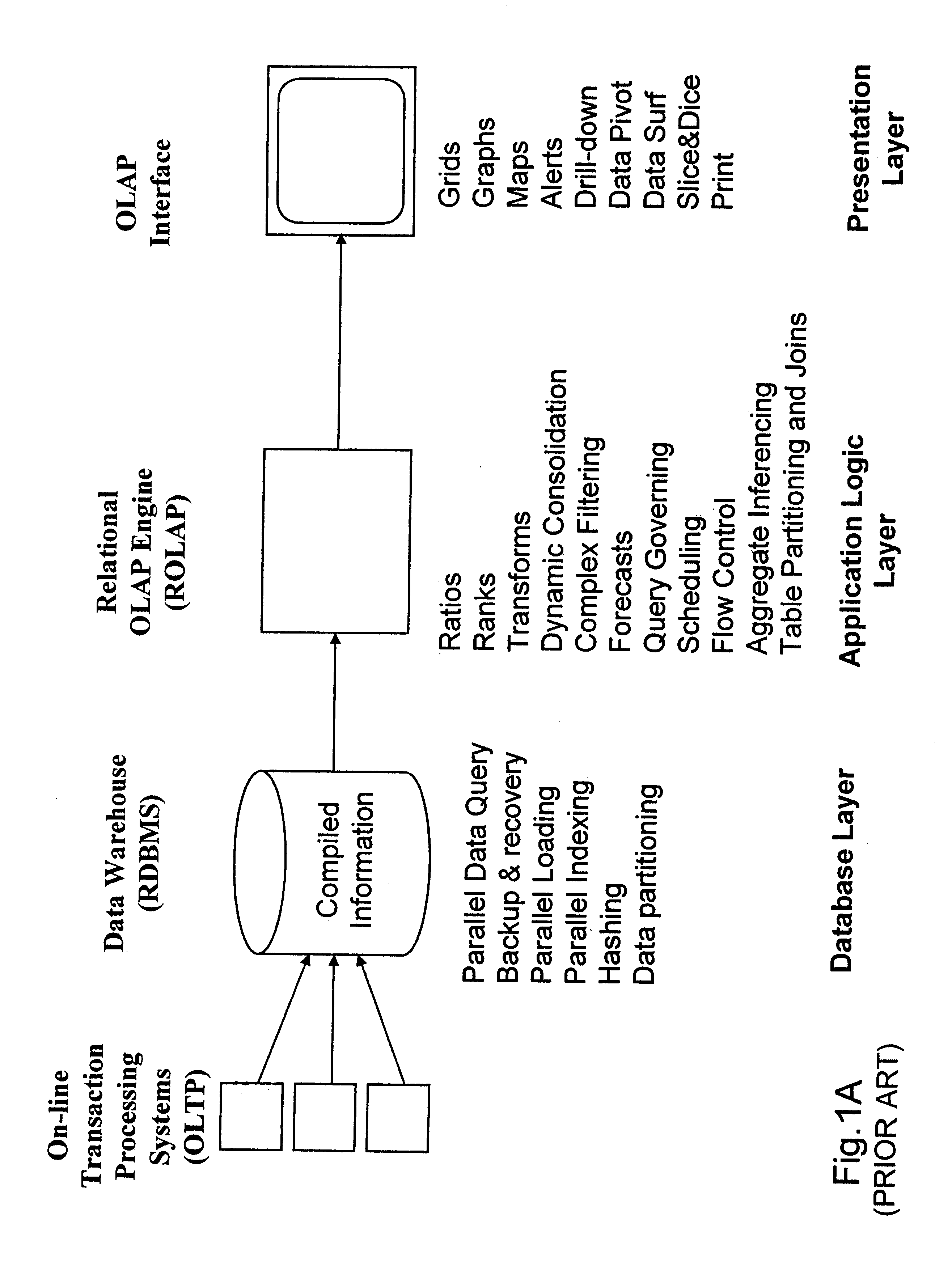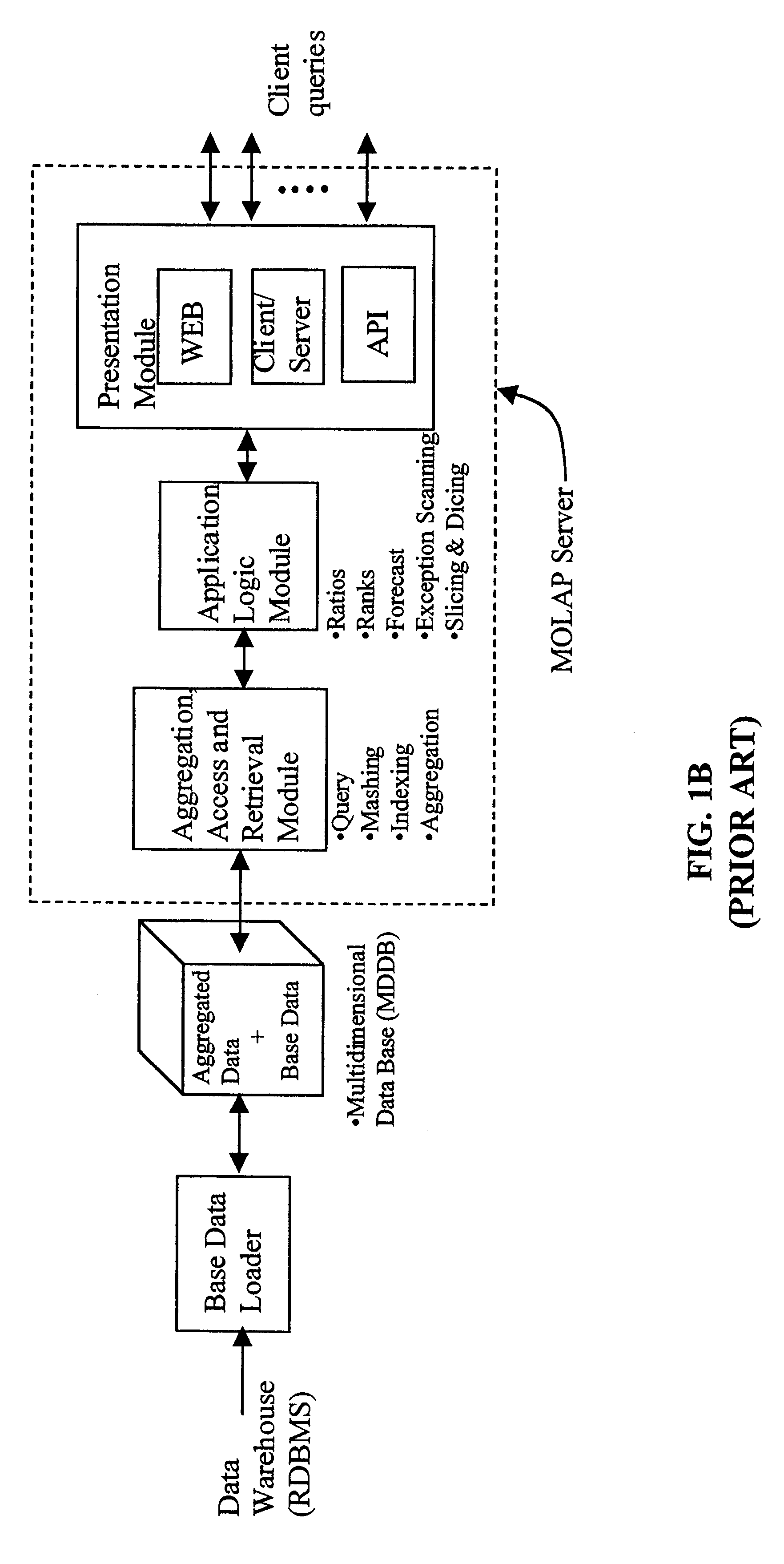Stand-alone cartridge-style data aggregation server providing data aggregation for OLAP analyses
a technology of data aggregation and data aggregation server, which is applied in the field of stand-alone cartridge-style data aggregation server providing data aggregation for olap analyses, can solve the problems of data warehouse not providing organizations, increasing the volume of information available to corporations, and reducing so as to reduce the burden of aggregation and maximize the query performance
- Summary
- Abstract
- Description
- Claims
- Application Information
AI Technical Summary
Benefits of technology
Problems solved by technology
Method used
Image
Examples
Embodiment Construction
Referring now to FIGS. 6A through 13, the preferred embodiments of the method and system of the present invention will be now described in great detail hereinbelow, wherein like elements in the Drawings shall be indicated by like reference numerals.
Through this invention disclosure, the term "aggregation" and "preaggregation" shall be understood to mean the process of summation of numbers, as well as other mathematical operations, such as multiplication, subtraction, division etc.
In general, the stand-alone aggregation server and methods of and apparatus for data aggregation of the present invention can be employed in a wide range of applications, including MOLAP systems, ROLAP systems, Internet URL-directory systems, personalized on-line e-commerce shopping systems, Internet-based systems requiring real-time control of packet routing and / or switching, and the like.
For purposes of illustration, initial focus will be accorded to improvements in MOLAP systems, in which knowledge worke...
PUM
 Login to View More
Login to View More Abstract
Description
Claims
Application Information
 Login to View More
Login to View More - R&D
- Intellectual Property
- Life Sciences
- Materials
- Tech Scout
- Unparalleled Data Quality
- Higher Quality Content
- 60% Fewer Hallucinations
Browse by: Latest US Patents, China's latest patents, Technical Efficacy Thesaurus, Application Domain, Technology Topic, Popular Technical Reports.
© 2025 PatSnap. All rights reserved.Legal|Privacy policy|Modern Slavery Act Transparency Statement|Sitemap|About US| Contact US: help@patsnap.com



